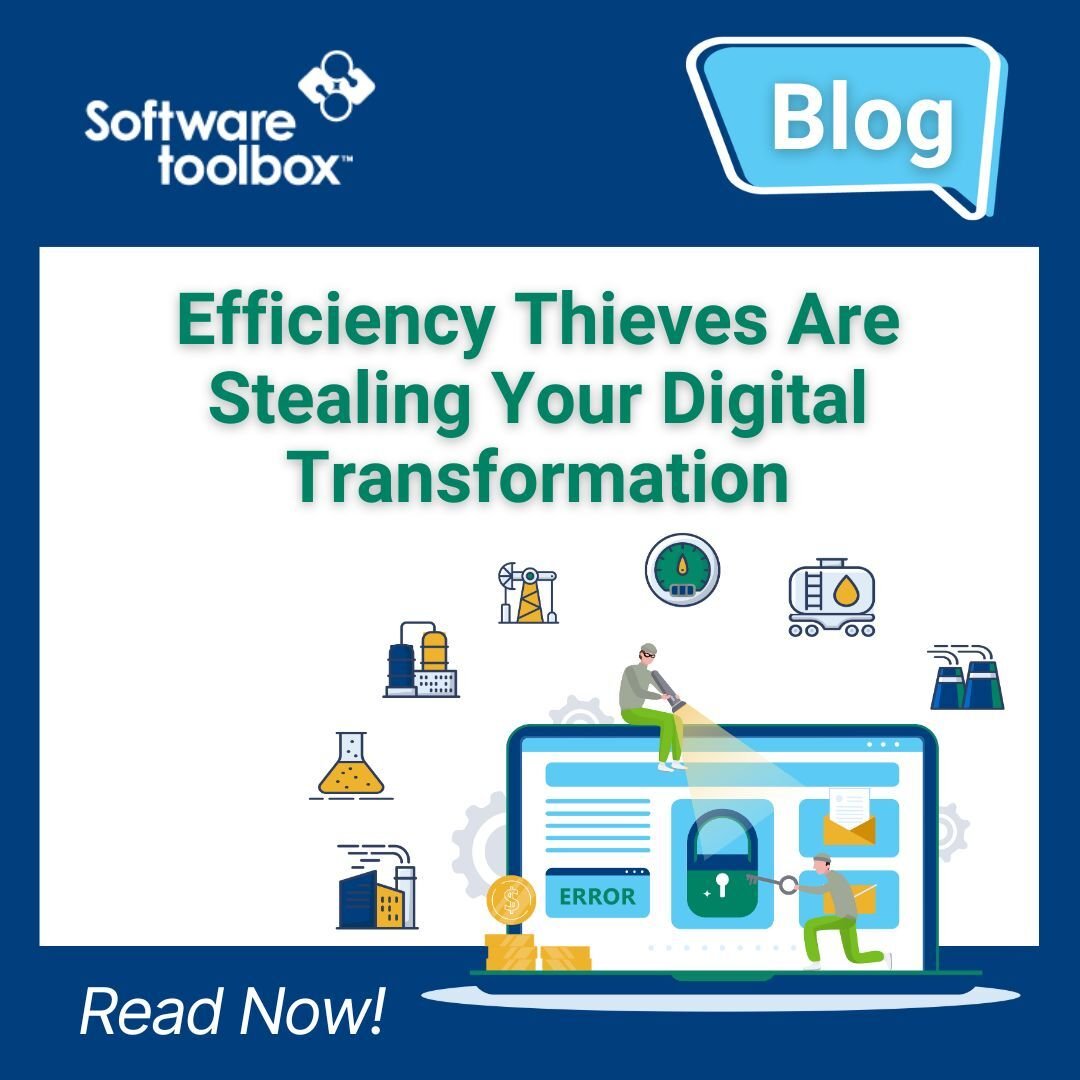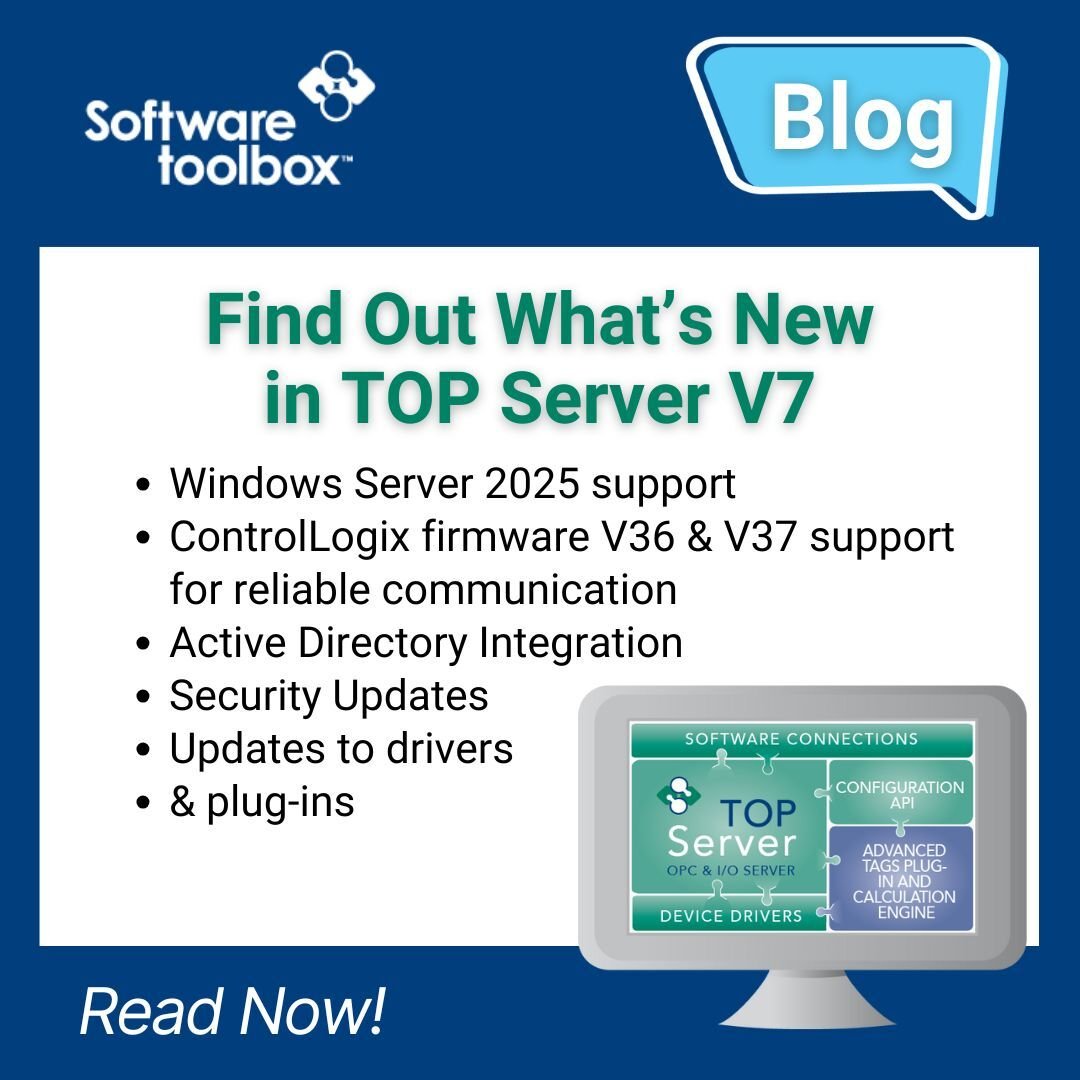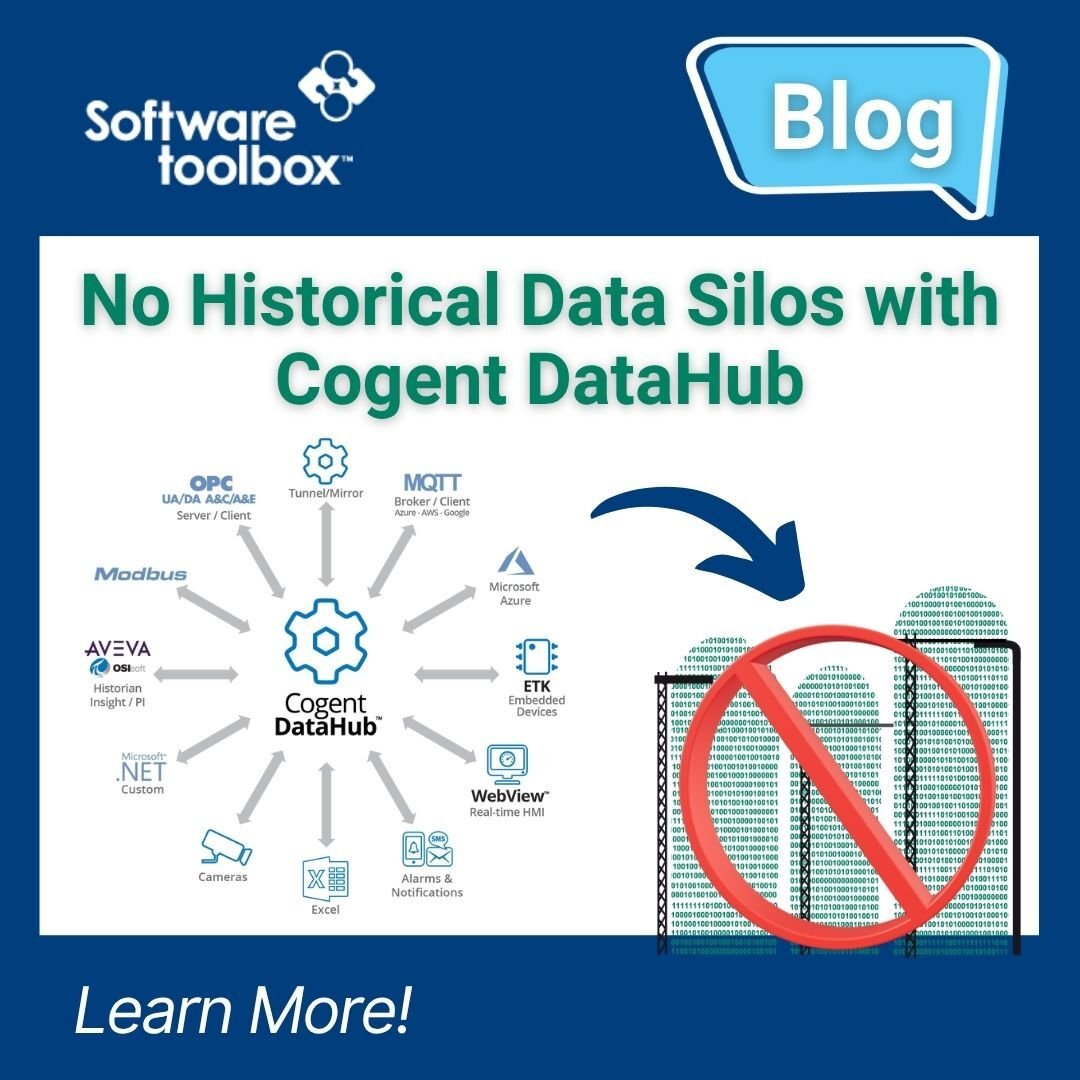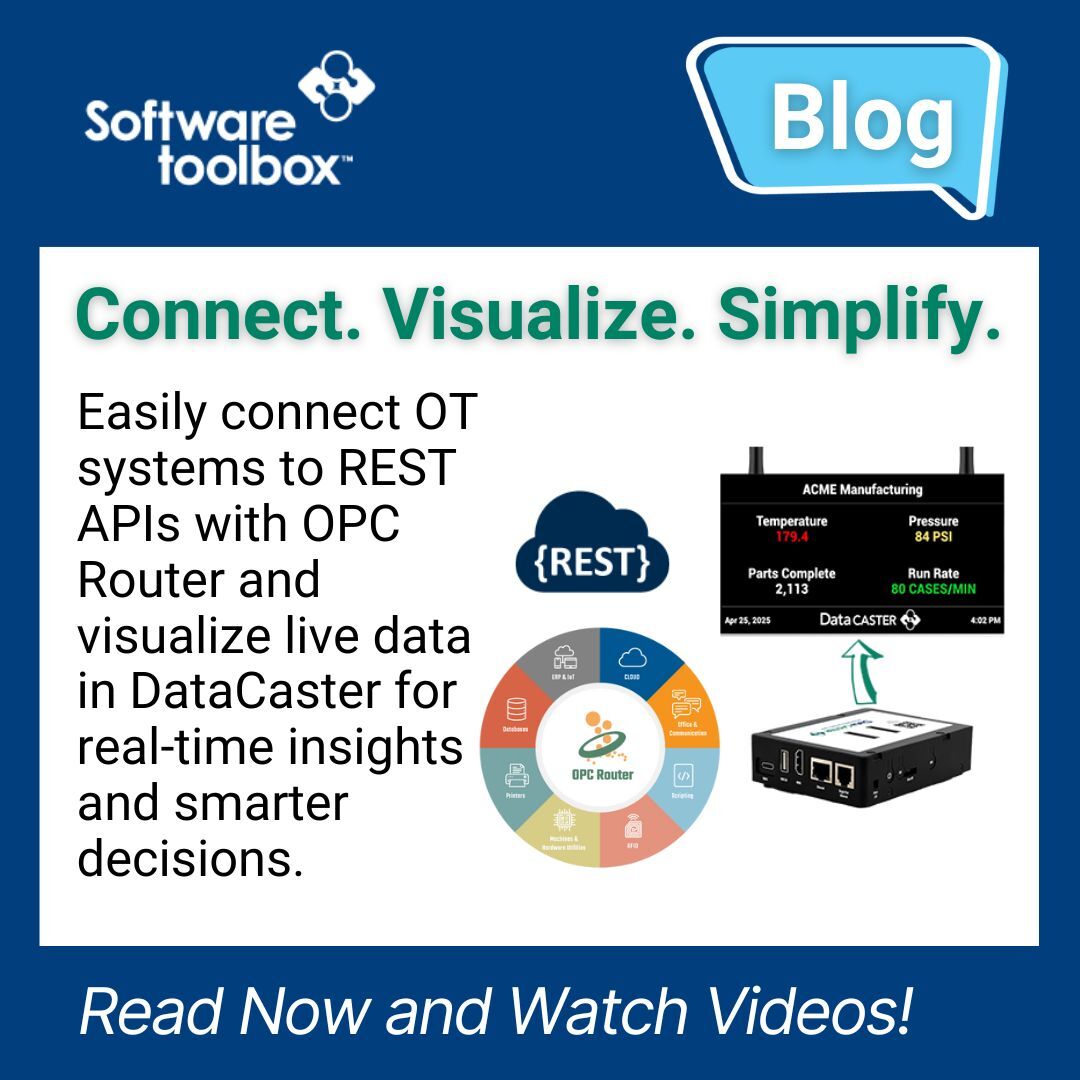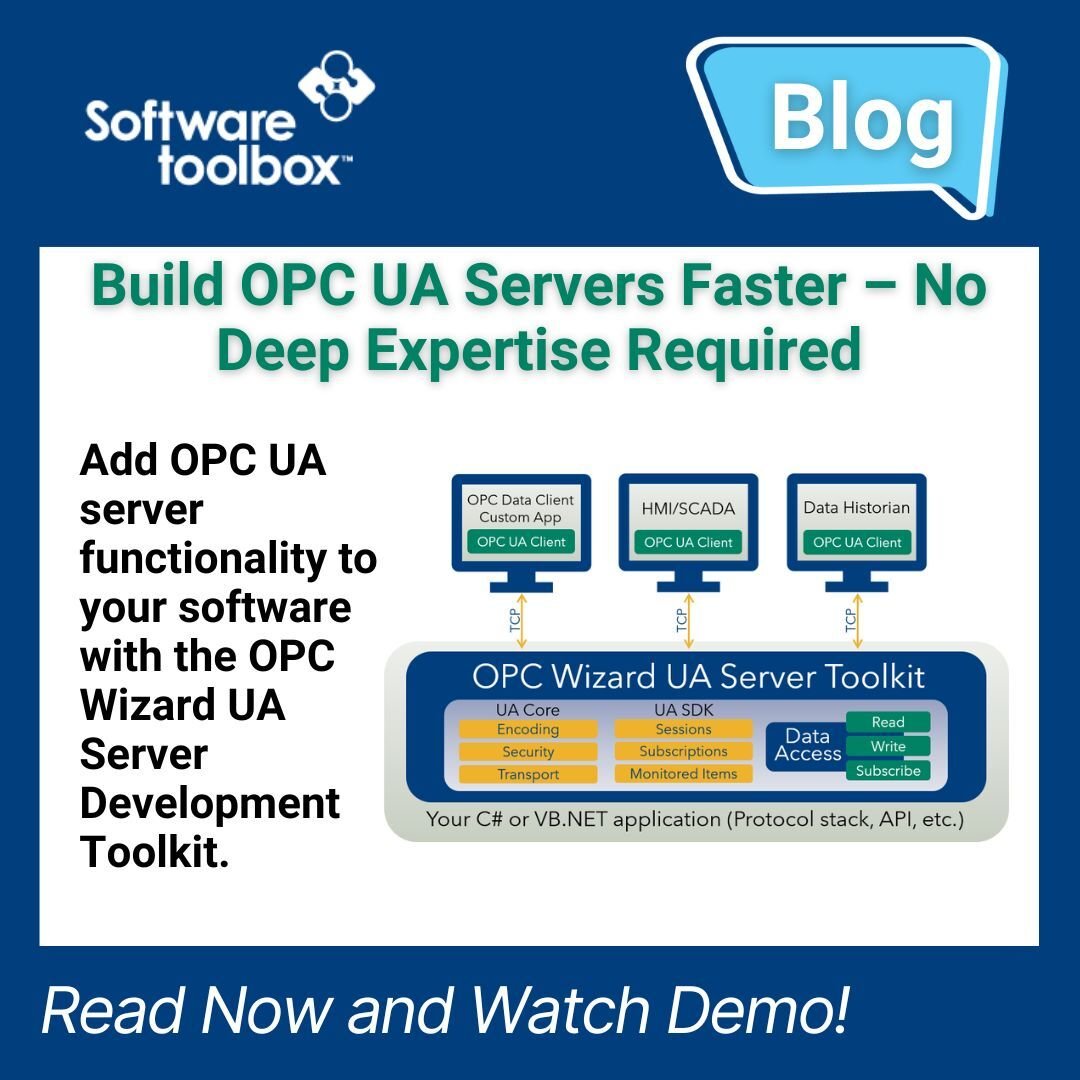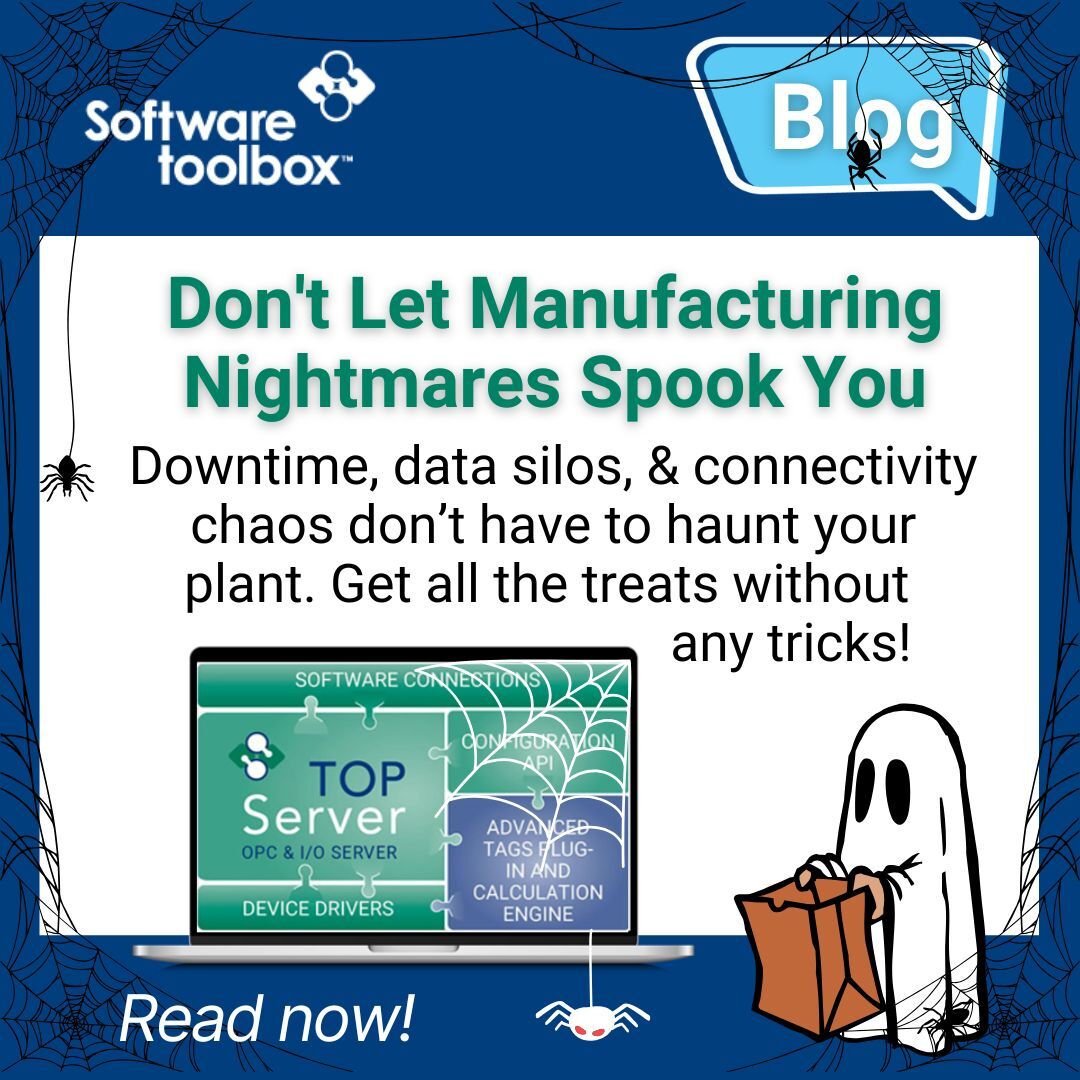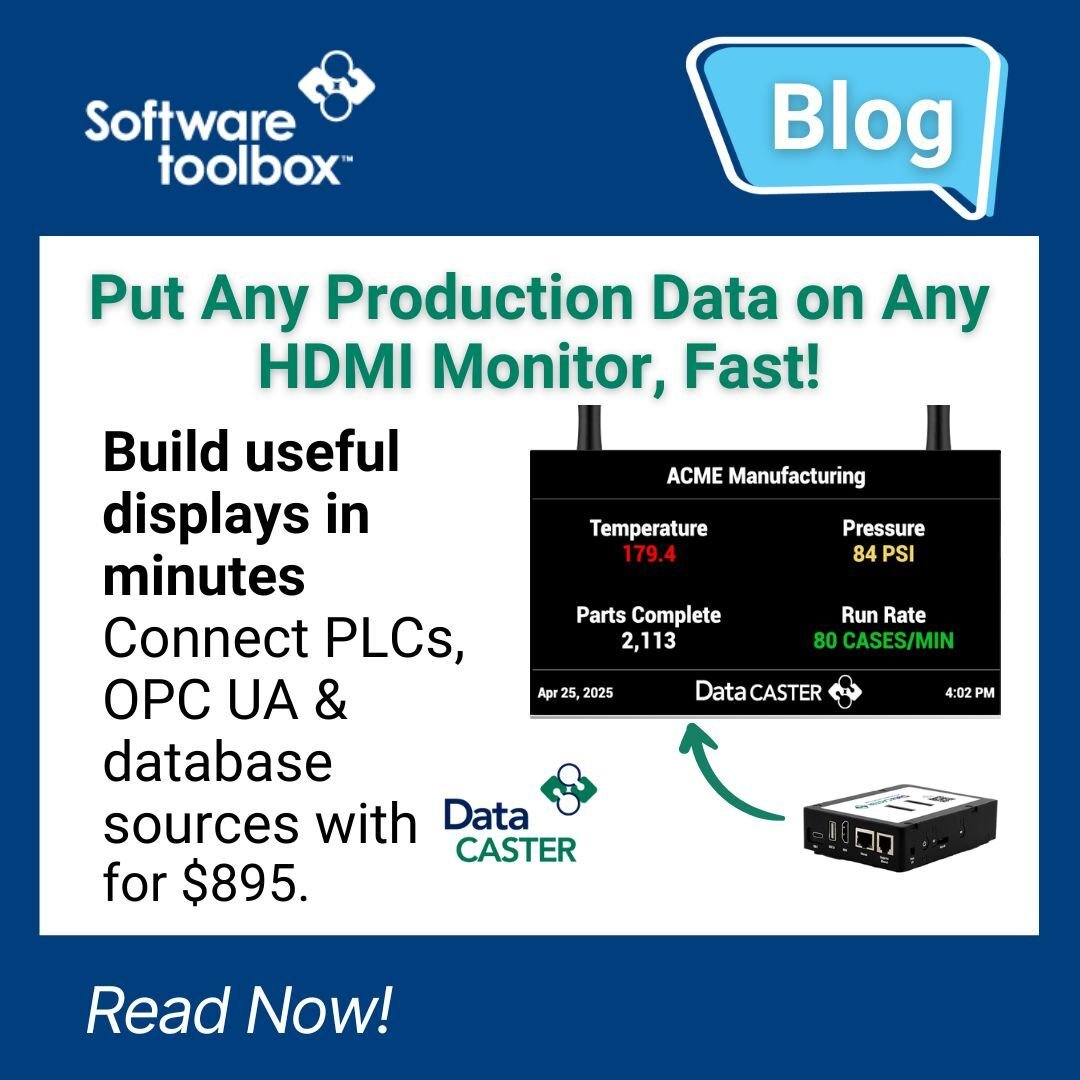As we leave 2025 behind us and welcome 2026, it’s clear that industrial connectivity and digital transformation continue to be front and center. All year long, Software Toolbox’s technical blog shared practical insights to help IT/OT professionals solve real-world challenges, from mastering classic protocols to embracing cutting-edge integration strategies.
Software Toolbox Technical Blog
What you liked to hear / read from us in 2025
6 min read
By Tanja Gehling on Jan 2, 2026 10:45:00 AM
Don’t Let a Data Grinch Ruin Your Digital Transformation
5 min read
By Tanja Gehling on Dec 11, 2025 2:00:00 PM
In today’s industrial world, data is king - but only if it’s accessible, accurate, and connected. Unfortunately, many organizations face a sneaky intruder: the Data Grinch. Unlike its Christmas counterpart, this troublemaker isn’t after gifts or holiday cheer. It steals efficiency, insights, and the very momentum of your digital transformation. It hides in siloed systems, outdated protocols, scattered data, and fragile integrations. Left unchecked, it slows decision-making, frustrates teams, and undermines operational performance.
TOP Server V7 Has Arrived – So What’s New?
4 min read
By Ryan Royse on Dec 4, 2025 2:00:00 PM
By now, you’ve probably heard that TOP Server V7 has officially landed. Maybe you’ve seen the announcements or caught a quick overview along the way. But if you find yourself wondering, “Okay, but what does this release actually change for me?” you’re in the right place.
While V7 continues to reinforce the stability and reliability TOP Server is known for, this release also introduces several important enhancements aimed at strengthening enterprise deployments, simplifying user management, and modernizing system compatibility. Whether you’re operating on the latest infrastructure or maintaining long-standing environments, V7 delivers meaningful improvements that make deployment more flexible, secure, and future-ready.
Let’s take a closer look at what’s new.
Breaking down Historical Data Silos with Cogent DataHub
13 min read
By Connor Mason on Nov 20, 2025 2:00:00 PM
In the ever-growing digital landscape of manufacturing operations, single use solutions & applications may solve issues, but also create their own data silos. These silos present multiple challenges (limited visibility, slower decision-making, security blind spots) and lead to missed opportunities due to the complex management of varying solutions. For example, OPC HDA is a standard utilized for collecting and sharing historical data across industrial automation technology solutions. Based on the standards of OPC DA, integration challenges arise due to the dependency of COM and remote DCOM connections, creating incompatibility with newer solutions and technologies.
Today we'll explore how Cogent DataHub was used to solve many of these integration headaches and silos by providing a middleware platform for connectivity between a variety of protocols and technologies. With the latest major revision of Cogent DataHub V11, the ability to collect historical OPC HDA data is now possible with the addition of the OPC HDA Client capability.
REST Assured: OPC Router Makes Data Work Harder (and More Visible with Data Caster)
7 min read
By Kyle Persyn on Nov 13, 2025 1:59:59 PM
When it comes to modern data workflows, REST APIs are one of the most flexible and widely adopted methods of integrating different systems. Whether you’re working with enterprise software, cloud services, or custom applications, REST provides a lightweight way to exchange data.
In this post, we’ll explore how OPC Router’s REST Client plug-in simplifies connection to RESTful endpoints. We’ll then walk through a practical demonstration using Software Toolbox’s Data Caster product, covering: A step-by-step demo of configuring the REST Client in OPC Router to collect data from an API and display that data with Data Caster.
By the end, you’ll see how REST fits neatly into your industrial data architecture, giving you a flexible bridge between OT and IT systems.
OPC Wizard: Rapidly Add OPC UA Server Capability to your Custom Software
2 min read
By Nicole Knox on Nov 6, 2025 2:00:00 PM
Your organization has a custom developed application that performs important tasks, and you need to provide access to that software from an HMI, SCADA, Historian, MES, or other system acting as an OPC UA Client. Adding an OPC UA server interface to a custom application that either you've developed or that you've taken over from someone else can be a daunting task. This is especially true if you're unfamiliar with the low-level details of the OPC UA specification.
Accelerate OPC UA Server Development with the OPC Wizard Toolkit
The OPC Wizard UA Server Development Toolkit addresses this reality head-on by providing a rapid development framework that handles the underlying OPC UA nuts and bolts for you. In a recent webinar we covered how to add an OPC UA Server interface to a custom .NET software application using OPC Wizard, without having to become an “OPC wizard” yourself.
Rather than spending hours on end diving into the specifications and debugging protocol details, you can utilize simple read, write, and subscribe methods, resulting in less engineering time and faster ROI.
How TOP Server Helps You Avoid Manufacturing Nightmares
6 min read
By Ryan Royse on Oct 30, 2025 4:45:00 PM
While Halloween and this time of year offers a few good scares, our customers in manufacturing face year-round nightmares that are far less fun: connectivity issues that stop production and unreliable data collection that restricts their ability to make informed decisions.
When your SCADA system can't communicate with your PLCs, your MES is missing critical data, and your operators are working without visibility into what's actually happening on the production floor, you're dealing with the kind of problems that lead to unplanned downtime, missed targets, and lost productivity.
In this post, we'll run through how our TOP Server handles common connectivity challenges, cover some practical tips for getting the most out of your setup, and show you how using remote configuration tools can simplify management across multiple servers, which all enable you to focus on production instead of troubleshooting communication nightmares.
Video Tutorial: Display OPC UA Information Where It Is Needed Most with DataCaster
2 min read
By John Gonzalez on Oct 23, 2025 2:00:01 PM
Industrial data is most valuable when it can be seen, understood, and acted upon. OPC UA has long been a widely adopted standard for securely exchanging data in industrial automation, but many users still face challenges: quickly visualizing live values without heavy software, sharing those values with non-technical stakeholders, and reducing setup complexity.
That’s why we’re excited to announce a new feature in DataCaster: direct OPC UA connectivity. So excited that we made a video about it that you can watch further down this blog in which I will show you how easy this new feature is to implement.With this enhancement, DataCaster can now connect to your OPC UA servers, browse and select tags, and stream live data values into simple displays where they matter most: bridging the gap between raw data and real-time decision-making with just a few clicks.
About this Blog
We're engineers like you, so this blog focuses on "How to" appnotes, videos, tech team tips, product update announcements, user case studies, and other technical updates. Subscribe to updates below. Your feedback and questions on posts are always welcomed.
Subscribe to our Blog
Recent Posts
Posts by Topic
- Device Connectivity (207)
- Wonderware (178)
- OPC UA (128)
- Cogent DataHub (110)
- OPC (107)
- TOP Server (106)
- Technical Support (101)
- OmniServer (72)
- Video Tutorials (71)
- OPC Router (52)
- OPC DA (45)
- Protocols (41)
- AVEVA (37)
- Automation 101 (29)
- Security (27)
- MQTT & IoT (24)
- OmniServer Did You Know (24)
- Data Tunneling (23)
- Connectivity (22)
- OPC Data Client (22)
- Development Tools (19)
- IT/OT (18)
- OPC Data Logger (18)
- DCOM (17)
- LGH (14)
- Database & Historian (13)
- OPC Tunnel (13)
- Summer of IoT (13)
- Alarms & Notifications (12)
- CSV (12)
- Database (12)
- Earth Day (12)
- Exploring OPC UA (12)
- OPC Gateway (11)
- Case Studies (10)
- Dream Report (10)
- EFM (10)
- Oil & Gas (10)
- REST & Web Services (10)
- Reporting (10)
- SQL (9)
- Flow (8)
- OPC Integration (8)
- Redundancy (8)
- Sustainability (8)
- AVEVA OPC UA Client (7)
- Modbus (7)
- ODBC (7)
- OPC Router Basic Training (7)
- OPC Server (7)
- SuiteLink (7)
- Data Logging (6)
- DataHub Training (6)
- OPC Alarms and Events (6)
- ProtocolDesign (6)
- xml (6)
- Data Bridging (5)
- Data Integration (5)
- Data Storage Deep Dive (5)
- OPC Conversion (5)
- DataCaster (4)
- InTouch (4)
- Industrial Decisions (4)
- OPC Bridge (4)
- OPC Toolkit Benefits (4)
- OmniServer User Stories (4)
- SLIK-DA (4)
- Business Intelligence (3)
- Error Detection (3)
- IT & Infrastructure (3)
- Industry 4.0 (3)
- OPC Redundancy (3)
- OPC Server Remote Config (3)
- Wedges (3)
- Windows (3)
- Collaboration (2)
- ControlLogix (2)
- Excel (2)
- Ignition (2)
- KEPServerEX (2)
- OPC Wizard (2)
- OSIsoft (2)
- Omron (2)
- PGAS (2)
- Predictive Maintenance (2)
- Process Alert (2)
- Scripting (2)
- Store and Forward (2)
- System Integrators (2)
- Building Automation (1)
- ERP (1)
- Kepware Edge (1)
- LGH User Stories (1)
- LRC (1)
- Linux (1)
- Machine Learning (1)
- Mining/Metals (1)
- OPC Data Logger User Stories (1)
- Omni Flow (1)
- Power & Utilities (1)
- Predictive Analytics (1)
- Process Alerts (1)
- QNX (1)
- Sparkplug B (1)
- Water & Wastewater (1)



